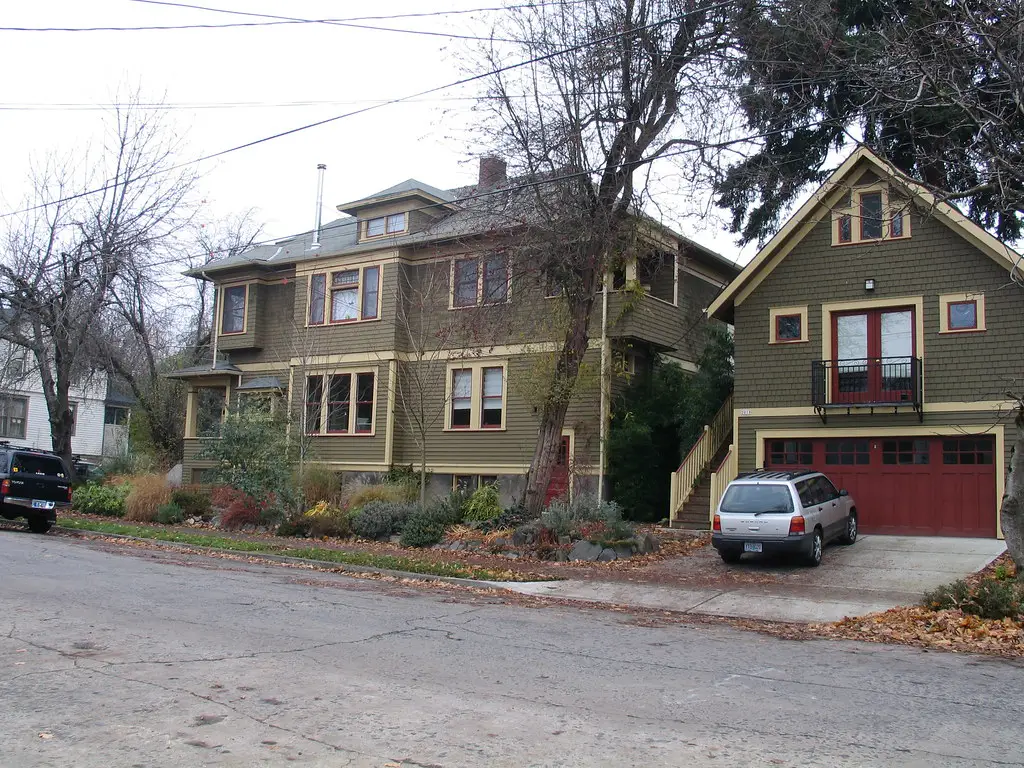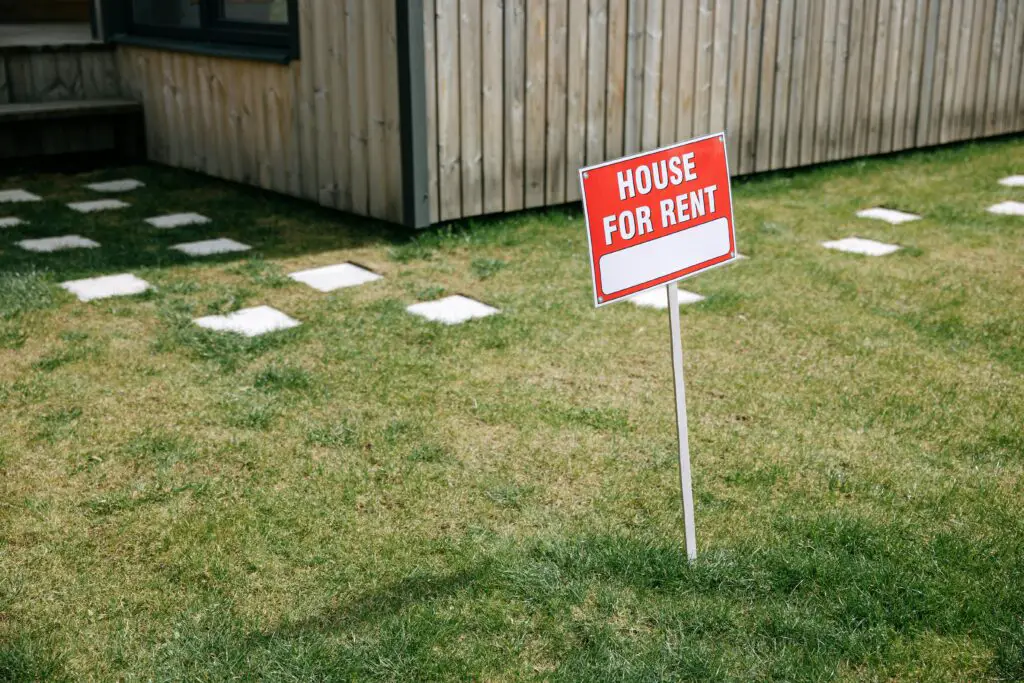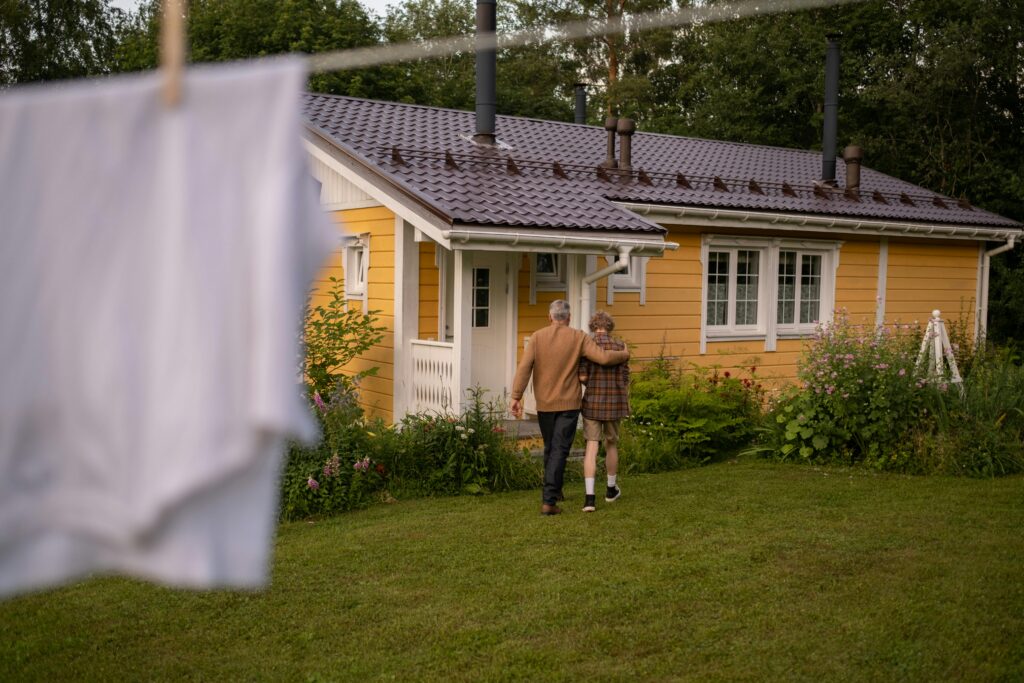The housing market is set for a shake-up in 2025, with experts predicting unexpected shifts that could catch buyers, sellers, and investors off guard. From potential interest rate cuts to surprising inventory trends and regional booms, the landscape of real estate may look drastically different from what many anticipate. Whether you’re planning to buy, sell, or simply keep an eye on the market, these expert-backed predictions will help you stay ahead of the curve.
1. Sustainability Driving Construction Trends

Sustainability has become a major priority in real estate, with eco-friendly homes gaining popularity among environmentally conscious buyers. Homebuilders are incorporating green technologies such as solar panels, energy-efficient appliances, and advanced insulation to reduce carbon footprints and lower utility costs. Many new developments are being designed with sustainability in mind, including rainwater harvesting systems, geothermal heating, and smart home automation to optimize energy usage. The demand for sustainable housing is not just a trend but a long-term shift driven by increasing climate awareness and government regulations.
Many states and municipalities are introducing incentives for homeowners who invest in energy-efficient upgrades, further accelerating adoption. Additionally, buyers are considering the environmental impact of building materials, opting for recycled, locally sourced, and non-toxic options. Green certification programs, such as LEED and ENERGY STAR, are influencing purchasing decisions, with certified homes often selling at a premium. Builders are also experimenting with new construction methods, such as 3D-printed homes and modular designs, to minimize waste and reduce environmental impact.
2. Increased Demand for Multi-Use Properties

As modern lifestyles evolve, buyers are seeking homes that can serve multiple functions, accommodating work, leisure, and daily living all in one space. The rise of remote and hybrid work arrangements has made home offices a necessity rather than a luxury, prompting many buyers to prioritize dedicated workspaces when searching for a home. Additionally, homes with adaptable layouts that allow for office space, home gyms, or even rental units are growing in popularity. In suburban and rural areas, where homes are generally larger and more affordable, the demand for multi-use properties is particularly strong.
Open floor plans with sliding partitions or flex rooms are becoming standard in new construction to meet these changing needs. Homebuyers are also looking for outdoor spaces that can double as entertainment areas, such as patios equipped with kitchens, fire pits, and smart lighting. As multigenerational living gains traction, many properties are being designed to accommodate extended families under one roof, with separate entrances or in-law suites. This shift reflects a broader trend of maximizing the functionality of residential spaces, ensuring that homes can easily adapt to future needs.
3. Technology Streamlining Real Estate Transactions

Advancements in technology are transforming the way real estate transactions are conducted, making the process faster, more efficient, and more transparent for buyers and sellers. Virtual tours and 3D walkthroughs are now standard tools in home listings, allowing prospective buyers to explore properties remotely before making a decision. AI-driven market analysis is helping buyers and investors assess property values with greater accuracy, providing insights into pricing trends and neighborhood dynamics. Blockchain technology is streamlining contract management and reducing the risk of fraud by enabling secure, tamper-proof transactions.
Digital mortgage applications and e-signature platforms are expediting the loan approval process, eliminating much of the traditional paperwork and delays. Real estate professionals are also leveraging automation and predictive analytics to match buyers with suitable properties more efficiently. Mobile apps and online portals are simplifying communication between agents, lenders, and clients, creating a seamless homebuying experience.
4. Regional Market Disparities Persist

The real estate market in 2025 will be highly fragmented, with some regions experiencing strong growth while others struggle with stagnation or decline. Economic conditions, local policies, and demographic shifts will play crucial roles in determining which markets thrive and which falter. Cities with strong job markets, population growth, and infrastructure investments will continue to see rising property values.
In contrast, areas facing economic downturns or high costs of living may experience slower growth or declining demand. Investors and homebuyers must carefully evaluate regional trends, considering factors such as employment opportunities, housing supply, and migration patterns. While some areas will remain seller-friendly markets, others may shift in favor of buyers due to decreased demand. Understanding these regional differences will be key to making informed real estate decisions in the coming years.
5. Institutional Investors Expanding Their Reach

Institutional investors are playing an increasingly dominant role in the housing market, acquiring residential properties at an unprecedented rate. Large investment firms and hedge funds are purchasing single-family homes and rental properties, particularly in high-demand metropolitan areas. This trend is driving up competition for available homes, making it more difficult for individual buyers to secure affordable properties. Critics argue that institutional ownership contributes to rising home prices and rental costs, exacerbating housing affordability challenges. In response, policymakers in some cities are considering regulatory measures to limit bulk home purchases by institutional investors.
On the other hand, proponents of institutional investment claim that these buyers help stabilize rental markets by increasing the supply of professionally managed properties. Build-to-rent communities, developed and owned by institutional investors, are also on the rise, offering renters high-quality housing with long-term stability. The expansion of institutional investment in real estate is expected to continue, reshaping homeownership trends and rental market dynamics. Prospective buyers will need to adapt to increased competition, while lawmakers may introduce new policies to address concerns about affordability and accessibility.
6. A Boom in Single-Family Rentals

The single-family rental market is poised for substantial growth as younger generations increasingly prioritize flexibility over long-term homeownership. With economic uncertainty and high mortgage rates making home purchases less accessible, many individuals and families are turning to rental options that provide the benefits of suburban living without the financial burden of ownership. Build-to-rent communities, which offer detached homes with modern amenities and professional management, are emerging in suburban and exurban areas across the country.
Additionally, remote work has increased demand for rentals outside major metropolitan areas, as workers seek homes with more space and better quality of life. The appeal of single-family rentals extends beyond young professionals, with retirees and downsizing empty nesters also seeing them as a viable alternative to traditional homeownership. Many of these rental communities feature amenities similar to those found in apartment complexes, such as fitness centers, co-working spaces, and communal areas.
7. Migration to Secondary Markets

Skyrocketing living costs in major metropolitan areas are prompting a growing number of individuals and families to relocate to smaller, more affordable cities. Cities like Raleigh, NC, and Tulsa, OK, have emerged as attractive destinations due to their lower cost of living, strong job markets, and vibrant communities. Many secondary markets offer comparable amenities to major cities, such as cultural attractions, top-rated schools, and diverse dining options, without the associated high costs. As remote work eliminates the need for proximity to corporate headquarters, workers are increasingly prioritizing lifestyle factors such as outdoor recreation, climate, and housing affordability when choosing a place to live.
The influx of new residents into these markets is driving up home values and rental prices, creating investment opportunities for real estate developers and landlords. Infrastructure improvements in many secondary cities, such as expanded public transit and upgraded broadband access, further enhance their appeal. Additionally, local governments are offering incentives, such as tax breaks and grants, to attract new businesses and residents. This migration trend is not limited to young professionals—retirees and families are also seeking out these markets for their affordability and quality of life.
8. Higher Interest Rates Reshaping Affordability

The anticipated rise in mortgage rates in 2025 will significantly impact housing affordability, making it more challenging for many buyers to enter the market. As borrowing costs increase, monthly mortgage payments will become more expensive, reducing purchasing power and forcing buyers to reconsider their budgets. This shift is expected to slow down home price growth, as fewer buyers will be able to afford high-priced properties. Many potential buyers, especially first-time homebuyers, may delay purchasing in hopes that interest rates will stabilize or decrease in the future. As a result, demand for more affordable housing options, including smaller homes, condos, and townhouses, will likely rise.
The rental market may also see increased demand as homeownership becomes less attainable for some, further boosting the single-family rental boom. Buyers who are determined to enter the market despite higher rates will need to be more strategic, exploring alternative financing options such as adjustable-rate mortgages or seller concessions. Real estate agents and lenders are already working on educating buyers about creative solutions to navigate these changes.
9. The Continued Rise of Smart Homes

Smart home technology is becoming an essential feature for modern homebuyers, with demand for automation and digital connectivity at an all-time high. Features such as voice-activated assistants, automated lighting, and smart thermostats allow homeowners to control their environment with ease, improving both security and energy efficiency. Home security systems, including smart locks, video doorbells, and motion-activated surveillance cameras, are becoming standard in new builds and renovations. Smart appliances, such as refrigerators that track grocery needs and washing machines that optimize water usage, are making everyday tasks more convenient and eco-friendly. Builders are integrating smart home technology into new developments to appeal to younger, tech-savvy buyers who prioritize connectivity and automation.
Additionally, smart home hubs and mobile apps allow homeowners to manage multiple devices from a single interface, increasing convenience. As energy efficiency continues to be a key focus, smart lighting and heating systems that adjust based on occupancy and usage patterns are helping homeowners save on utility costs. The integration of AI-powered systems is further enhancing the capabilities of smart homes, allowing for predictive maintenance and personalized automation. These technological advancements are also increasing home values, as buyers are willing to pay a premium for properties with cutting-edge features.
10. More Focus on Affordable Housing

The affordable housing crisis remains a significant challenge, prompting increased efforts from both governments and private developers to create accessible housing options. Rising home prices and interest rates have made it difficult for many first-time buyers and low-income families to enter the market, leading to calls for more affordable housing initiatives. Many cities are introducing zoning reforms to encourage the construction of multi-family units, townhouses, and accessory dwelling units (ADUs) to increase supply. Developers are also leveraging modular and prefabricated construction techniques to build cost-effective housing faster and more efficiently. Government programs offering tax incentives, subsidies, and low-interest financing options for affordable housing projects are gaining traction, making it easier for developers to invest in this sector.
Public-private partnerships are playing a crucial role in bridging the gap, with companies collaborating with municipalities to expand affordable housing availability. Rent control measures and first-time homebuyer assistance programs are also being implemented in many regions to ease financial burdens. Additionally, the demand for mixed-income developments—communities that blend market-rate and affordable units—continues to grow, creating more inclusive neighborhoods. With the housing shortage continuing to impact millions, policymakers are under pressure to prioritize long-term solutions that ensure sustainable affordability.
11. Shifting Preferences Toward Smaller Homes

The rising cost of living, coupled with economic uncertainty, has led to a shift in homebuyer preferences, with many opting for smaller, more cost-effective homes. Construction costs have surged in recent years due to supply chain disruptions, inflation, and labor shortages, making large homes less affordable for the average buyer. As a result, tiny homes, compact townhouses, and efficiently designed single-family residences are becoming increasingly popular among cost-conscious buyers. Millennials and Gen Z, in particular, are prioritizing affordability and sustainability, favoring homes that offer lower utility bills and reduced maintenance costs. Downsizing is also appealing to retirees looking to simplify their lifestyles and reduce expenses.
Developers are responding to this trend by creating thoughtfully designed small homes that maximize space with multi-functional layouts, built-in storage, and open-concept living areas. Additionally, the rise of minimalist living has contributed to the appeal of smaller homes, with buyers focusing on quality over quantity. The growing popularity of co-living spaces and micro-apartments in urban areas reflects this shift, providing affordable housing options in high-cost cities. As housing costs continue to rise, the demand for smaller homes is expected to persist, reshaping the way developers approach new construction. Whether driven by financial necessity or a desire for a simpler lifestyle, the preference for smaller homes is becoming a defining trend in the real estate market.
12. Remote Work Impacting Location Choices

The widespread adoption of remote and hybrid work models has fundamentally changed how people choose where to live, shifting demand away from traditional urban centers. With fewer workers tied to physical office locations, many are prioritizing lifestyle factors such as affordability, climate, and quality of life when selecting a home. Suburban and rural areas that offer lower costs of living and larger properties have seen an influx of new residents seeking more space and a better work-life balance. This trend has also boosted demand in vacation destinations, as remote workers take advantage of flexible schedules to live in scenic areas.
Meanwhile, homebuyers are increasingly looking for properties with dedicated office spaces, high-speed internet, and smart home features to accommodate their remote work needs. The shift away from commuter-driven real estate has also spurred development in previously overlooked regions, creating new economic opportunities in smaller towns. While some companies are mandating a return to the office, the long-term trend suggests that remote and hybrid work will remain a key factor in homebuying decisions. The ability to work from anywhere has given buyers unprecedented flexibility, reshaping regional housing markets across the country.
